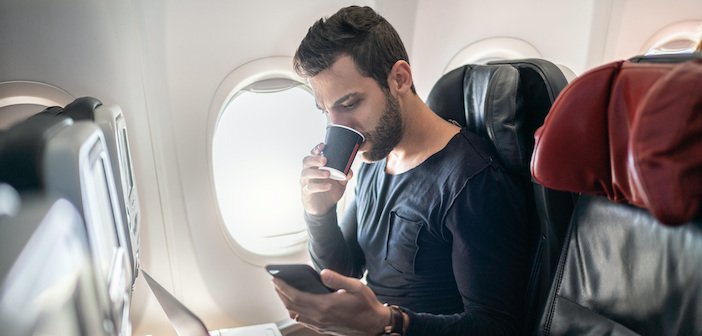APAC passengers are now 12-times more confident in air travel

Following the release of last week’s figures from Inmarsat’s annual passenger report that showed that passengers surveyed in 10 countries (UK, Brazil, Germany, UAE, Saudi Arabia, South Korea, India, Australia, USA and Singapore) are eight-times more confident in air travel in 2022 than this time last year, statistics from the Asia Pacific (APAC) region have been released.
Inmarsat’s research has found that three quarters of airline passengers in the APAC region feel confident about flying again, following the pandemic. This is a significant rise from just 6% last year, according to the survey of 4,000 people across the APAC region who have travelled by air in the past 12 months. The survey took place in in August and September 2022.
Key to this renewed confidence in air travel is the general easing of Covid-related travel restrictions in the region. These were reflected in findings across the surveyed countries in APAC, with Indian respondents indicating the greatest travel confidence (88%), followed by those in Australia and Singapore (79%), and South Korea (53%).
As appetite for travel rebuilds, airlines are increasing their efforts to enhance their flying experiences. Inmarsat, an inflight connectivity provider, says that such services are one of the leading factors that influence which airline is selected by APAC passengers, with 83% saying they are more likely to rebook with an airline if quality inflight wi-fi is available – an increase from 78% in the previous year.
Meanwhile 74% of those surveyed say it is important to connect to wi-fi when flying – up from 39% in 2021. The greater desire for travel and increasing demand for connectivity presents an opportunity for airlines to create more meaningful and compelling digital experiences for travellers beyond just inflight connectivity.
The volume of APAC passengers using digital devices on flights remains high at 96% – mostly for entertainment and administrative tasks. In addition, 78% have connected to inflight broadband when available on a flight – more than double the percentage from the previous year (38%). Inmarsat says this demonstrates that airlines should prioritise the availability of reliable wi-fi and simplify the signing up process for travellers to stay connected.
Travellers across APAC are also willing to trade parts of the inflight experience for connectivity. 36% of respondents say they would be willing to view advertisements in order to access wi-fi, and 32% claim they would give up alcoholic drinks inflight if it means having access to quality and consistent connectivity. 29% of travellers from India say they would even be willing to standing for the entire duration of a flight if it meant access to reliable wi-fi onboard.
Watching downloaded movies or TV shows was the most popular onboard activity passengers would engage in while connected – a figure that is unsurprising, considering that 32% indicated they would pay more to access exclusive inflight entertainment content while flying. In addition, 28% would pay more for both unlimited downloads and social media usage.
Although the survey results indicate that APAC passengers are willing to pay for better or more connectivity-enabled experiences during their flights, cost remains the most prohibitive factor across all markets, with Australian passengers (56%) feeling the most strongly about it. 80% of APAC passengers also believe that wi-fi should be free on long-haul flights, with 49% saying the same for short-haul flights.
David Coiley, Asia Pacific regional vice president at Inmarsat Aviation said of the survey, “Passenger demand for fast and reliable wi-fi has never been higher, so providing access to such services is absolutely essential for airlines. This also serves as the foundation to enhance the overall onboard experience through digitalisation, which our survey results indicate will not only be embraced by passengers, helping to drive their future brand loyalty, but also unlocks even greater revenue generation opportunities for airlines across Asia Pacific.”
